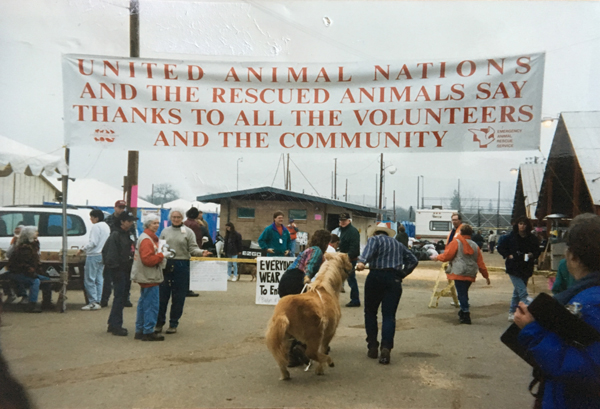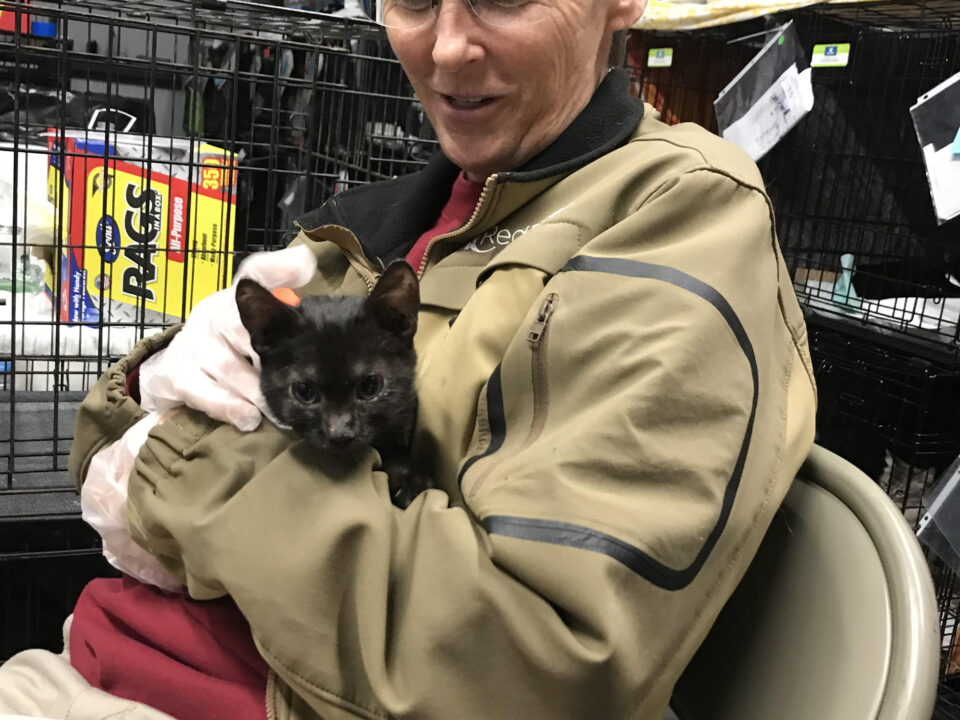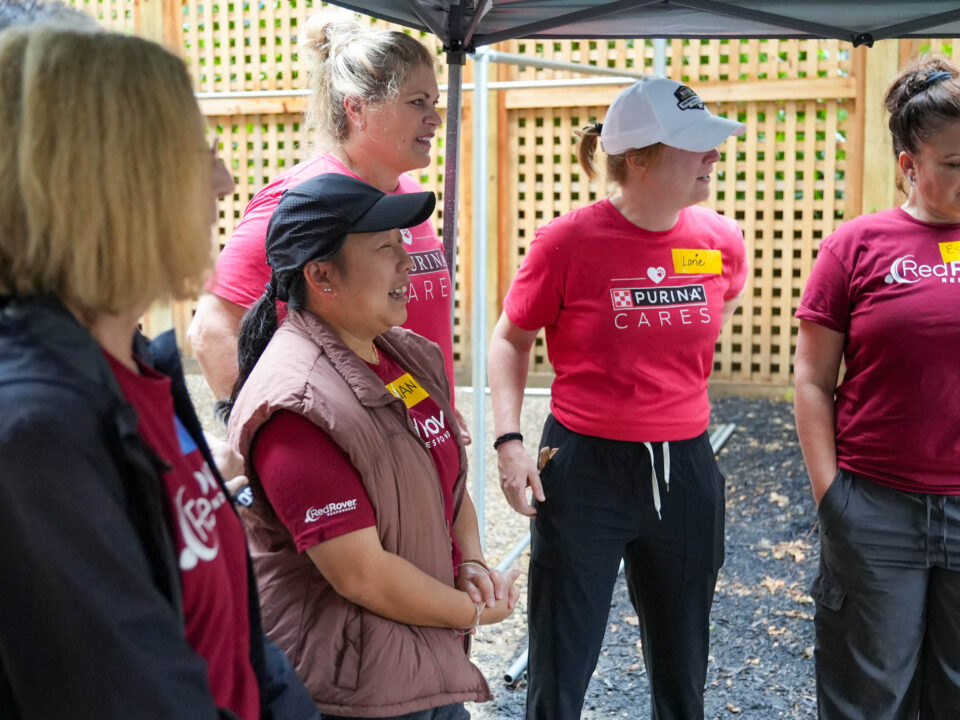Eyewitness to Humankind: RedRover Responders looks back
June 12th, 2017
By Jeane Westin
From Northern California flood response, 1997
I guess I’d grown cynical. Over the years the wrong presidential candidates were elected, vicious crime seemed to dominate the news of the nation, and in my own neighborhood a depraved cat torturer was on the loose. I wasn’t always an enthusiastic booster of the human race. Until Saturday, January 4, 1997.
As I approached the Placer County Fairgrounds near Sacramento, the site of our EARS emergency shelter for animals rescued during the devastating California floods, I was trapped in a long line of cars, trucks, campers, all filled with food and blankets, cat litter and cages — and people, ordinary citizens who’d heard our pleas for supplies and volunteers in the local media. And they’d come to help the animals, the smallest and most helpless victims of rampaging rivers and broken levees.
As I made my way to the front of the line and parked my car, mounds of donated supplies were being covered by tarpaulins against a threatening sky. Ahead were three large trucks filled with animals, and as each dog and cat was removed they were handed into the waiting arms of an EARS volunteer. Expert animals handlers controlled a huge Rottweiler, stiff with fright, while others cuddled scared puppies and kittens.

Immediately animals were tagged and photographed (already owners were looking through polaroids for their missing pets), then each animal was taken to a waiting veterinarian for a check-up before being placed in a cage to be fed and watered.
On the door of the receiving building, I saw a sign reminding volunteers to walk the dogs by five o’clock. To one side was the cattery, where a dozen paws reached out to me. And in the center of what looked and sounded like chaos, 150 busy EARS volunteers, people searching for their pets, supply trucks being unloaded and hundreds of dogs barking, stood Terri Crisp, EARS Director, unflappable, responding to every problem from “The Sheriff’s deputies in Yuba County won’t let us on the river to rescue some stranded horses,” to “Where is the telephone?”
After telling me with a grin that she’d slept in her van the night before with her jacket for a pillow, she said, without taking her eyes off the swirling activity, “This is wonderful, what I always hoped for. Ten years now we’ve been trying to get the message that animals are forgotten victims of disasters and I think that message is beginning to get through. Look at all these people who care!”
And there were so many people coming in to volunteer that soon the night shift was filed for this 24-hour operation, and eager volunteers were being put on a waiting list.
I walked back through the huge barn filled with long rows of temporary wire cages, each row named after a flower, Iris or Rose, the better to locate a particular animal. Every cage was filled with straw and toweling, covered with colorful blankets and quilts against the increasing cold, and in one cage I saw an EARS volunteer, sitting in the straw stroking and holding a dog. I’d written about the importance of tender loving care for rescued pets before in UAN press releases and I thought I knew what that phrase meant. But on January 4th, I saw TLC with a human face, sitting in the straw of a cold barn holding a dog on his lap.
Terri Crisp estimates that the EARS emergency shelter will probably be operating for two weeks or even longer, and fostering care arrangements for more weeks or months while flooded-out families rebuild their homes. During that time, the scenes I witnessed will be repeated hundreds maybe thousands of times.
When I open my newspaper in the days to come or turn on my television, dreadful things will be happening in the world, but I will no longer be so cynical.
I’ve seen the face of humankind sitting in the straw, holding a dog.



